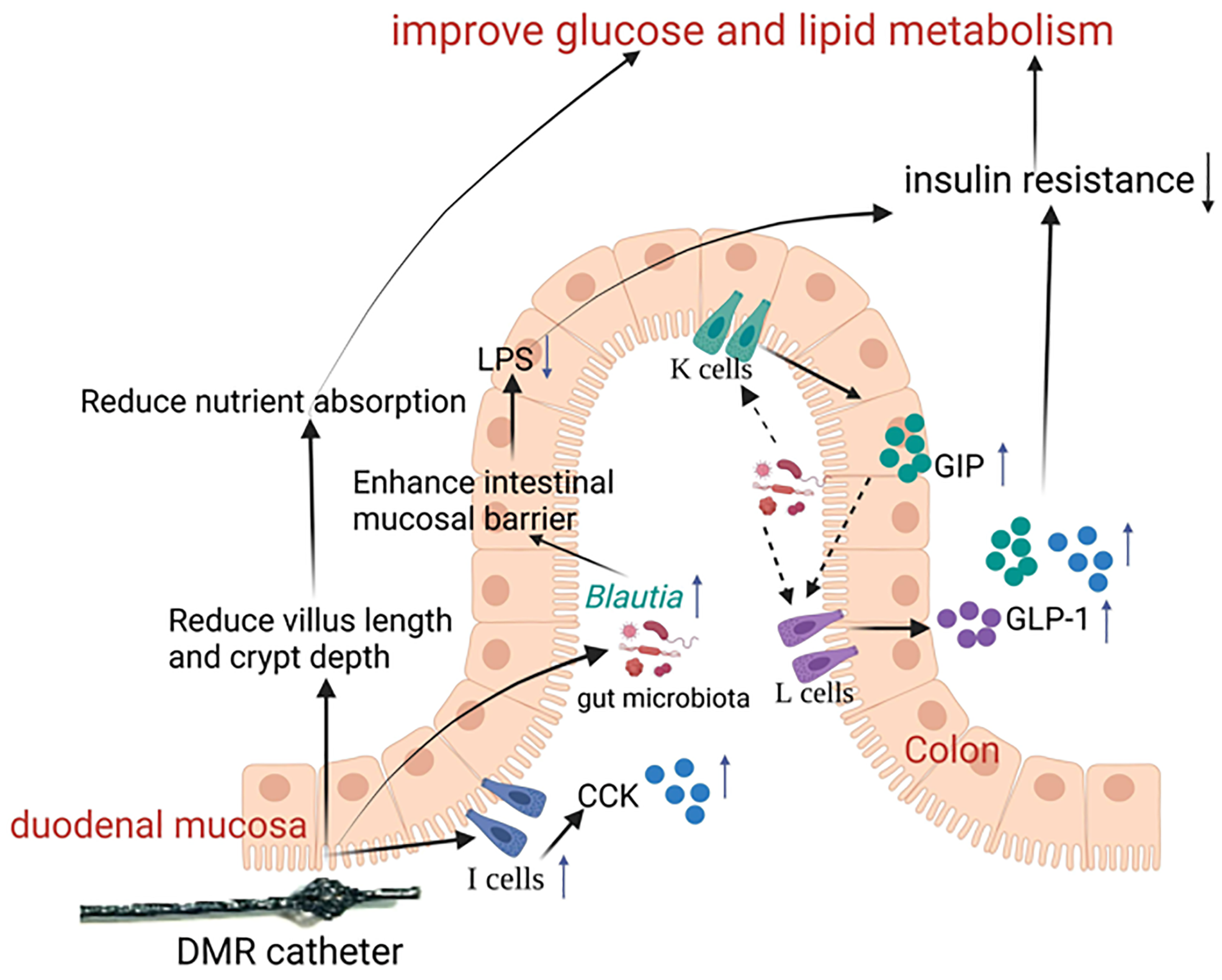Copyright
©The Author(s) 2025.
World J Diabetes. Mar 15, 2025; 16(3): 102277
Published online Mar 15, 2025. doi: 10.4239/wjd.v16.i3.102277
Published online Mar 15, 2025. doi: 10.4239/wjd.v16.i3.102277
Figure 8 Schematic representation of the mechanisms by which the duodenal mucosal resurfacing procedure improves the control of metabolic disorders.
This diagram illustrates the hypothesized mechanisms through which duodenal mucosal resurfacing procedure improves blood glucose and liver metabolic disorders in a type 2 diabetes rat model. The black solid line arrows indicate promotion effects; the black dashed line arrows indicate potential promotion effects; the black inverted arrows indicate the content or activity decrease; the blue forward arrows indicate the content or activity increase; and the T-shaped solid line without an arrow indicates inhibition. CCK: Cholecystokinin; DMR: Duodenal mucosal resurfacing; GIP: Gastric inhibitory peptide; GLP-1: Glucagon-like peptide 1; LPS: Lipopolysaccharide.
- Citation: Nie LJ, Cheng Z, He YX, Yan QH, Sun YH, Yang XY, Tian J, Zhu PF, Yu JY, Zhou HP, Zhou XQ. Role of duodenal mucosal resurfacing in controlling diabetes in rats. World J Diabetes 2025; 16(3): 102277
- URL: https://www.wjgnet.com/1948-9358/full/v16/i3/102277.htm
- DOI: https://dx.doi.org/10.4239/wjd.v16.i3.102277









